I am trying to authorize the swagger api with the okta configuration using ASP.NET core 2.2.
Followed the instruction from this link https://app.swaggerhub.com/help/enterprise/user-management/sso/okta
But quite not sure how can I do it.
Okta link
here is my Asp.net code
ConfigureSwagger(services);
protected virtual void ConfigureSwagger(IServiceCollection services)
{
// to view online help, goto ~/swagger/
services.AddTransient<IConfigureOptions<SwaggerGenOptions>, ConfigureSwaggerOptions>();
services.AddSwaggerGen(options =>
{
// add a custom operation filter which sets default values
options.OperationFilter<SwaggerDefaultValues>();
});
services.ConfigureSwaggerGen(options => { });
}
public class ConfigureSwaggerOptions : IConfigureOptions<SwaggerGenOptions>
{
readonly IApiVersionDescriptionProvider provider;
/// <summary>
/// Initializes a new instance of the <see cref="ConfigureSwaggerOptions"/> class.
/// </summary>
/// <param name="provider">The <see cref="IApiVersionDescriptionProvider">provider</see> used to generate Swagger documents.</param>
public ConfigureSwaggerOptions(IApiVersionDescriptionProvider provider) => this.provider = provider;
/// <inheritdoc />
public void Configure(SwaggerGenOptions options)
{
// add a swagger document for each discovered API version
// note: you might choose to skip or document deprecated API versions differently
foreach (var description in provider.ApiVersionDescriptions)
{
options.SwaggerDoc(description.GroupName, CreateInfoForApiVersion(description));
}
options.OrderActionsBy(apiDesc => apiDesc.RelativePath);
options.IncludeXmlComments(Path.ChangeExtension(typeof(Startup).GetTypeInfo().Assembly.Location, "xml"));
options.DescribeAllEnumsAsStrings();
options.DescribeStringEnumsInCamelCase();
//options.AddSecurityDefinition("oauth2",
// new OAuth2Scheme
// {
// Type = "oauth2",
// Flow = "implicit",
// AuthorizationUrl = new Uri("/connect/authorize", UriKind.Relative).ToString(),
// Scopes = new Dictionary<string, string>
// {
// {"api1", "DEMO API"}
// }
// });
//options.AddSecurityRequirement(new[] { "oauth2", "api1" });
options.AddSecurityDefinition("oauth2",
new OpenApiSecurityScheme
{
Type = SecuritySchemeType.OAuth2,
Flows = new OpenApiOAuthFlows
{
Implicit = new OpenApiOAuthFlow
{
AuthorizationUrl = new Uri("/connect/authorize", UriKind.Relative),
Scopes = new Dictionary<string, string>
{
{Program.ResourceIdentifier, Program.ApplicationName}
}
}
}
});
options.AddSecurityRequirement(new OpenApiSecurityRequirement
{
{
new OpenApiSecurityScheme
{
Reference = new OpenApiReference
{
Type = ReferenceType.SecurityScheme,
Id = "oauth2"
}
},
new[] {"oauth2", Program.ResourceIdentifier }
}
});
options.EnableAnnotations();
//options.DocInclusionPredicate((docName, apiDesc) =>
//{
// if (!apiDesc.TryGetMethodInfo(out MethodInfo methodInfo)) return false;
// var versions = methodInfo.DeclaringType
// .GetCustomAttributes(true)
// .OfType<ApiVersionAttribute>()
// .SelectMany(attr => attr.Versions);
// return versions.Any(v => $"v{v.ToString()}" == docName);
//});
}
static OpenApiInfo CreateInfoForApiVersion(ApiVersionDescription description)
{
var info = new OpenApiInfo
{
Title = Program.ApplicationName,
Version = $"v{description.ApiVersion}",
Description = "A sample application with Swagger, Swashbuckle, and API versioning."
};
if (description.IsDeprecated)
{
info.Description += " This API version has been deprecated.";
}
return info;
}
}
public static void UseSwaggerMiddleware(this IApplicationBuilder app, IApiVersionDescriptionProvider provider)
{
app.UseSwagger();
// Enable middleware to serve swagger-ui (HTML, JS, CSS etc.), specifying the Swagger JSON endpoint.
app.UseSwaggerUI(c =>
{
// build a swagger endpoint for each discovered API version
foreach (var description in provider.ApiVersionDescriptions)
{
c.SwaggerEndpoint($"/swagger/{description.GroupName}/swagger.json", description.GroupName.ToUpperInvariant());
}
//OAuth2
c.OAuthClientId("{clientId}");
//c.OAuth2RedirectUrl("");
//c.OAuthUseBasicAuthenticationWithAccessCodeGrant();
c.OAuthClientSecret("{ClientSecret}");
c.OAuthAppName("{AppName}");
c.OAuthScopeSeparator("openid profile email");
c.OAuthAdditionalQueryStringParams(new Dictionary<string, string>
{
{ "response_type","token"}
});
});
}
Errors Hide
Auth error
{"state":"VGh1IE9jdCAwMyAyMDE5IDE1OjI4OjEyIEdNVCsxMDAwIChBVVMgRWFzdGVybiBTdGFuZGFyZCBUaW1lKQ==","error":"unsupported_response_type","error_description":"The+response+type+is+not+supported+by+the+authorization+server.+Configured+response+types:+[id_token,+code]."}
How do I configure with swagger authorization client with JWT token.

